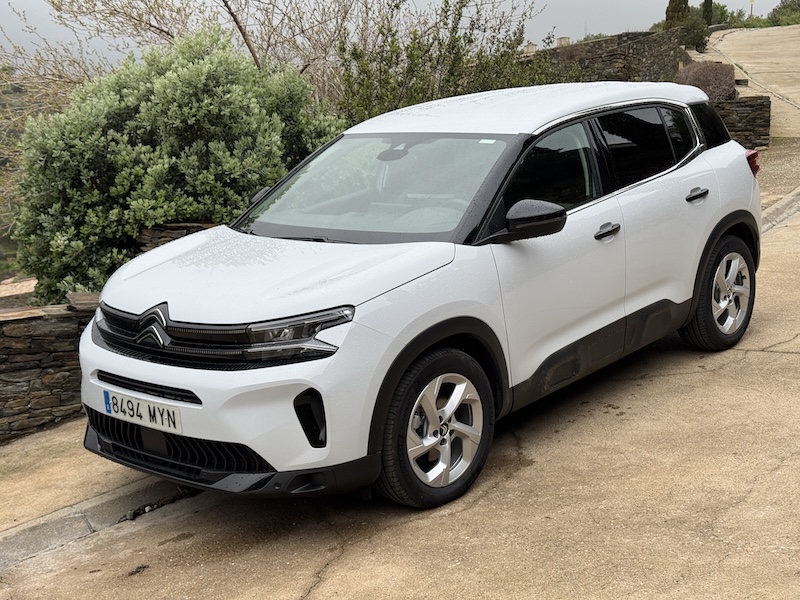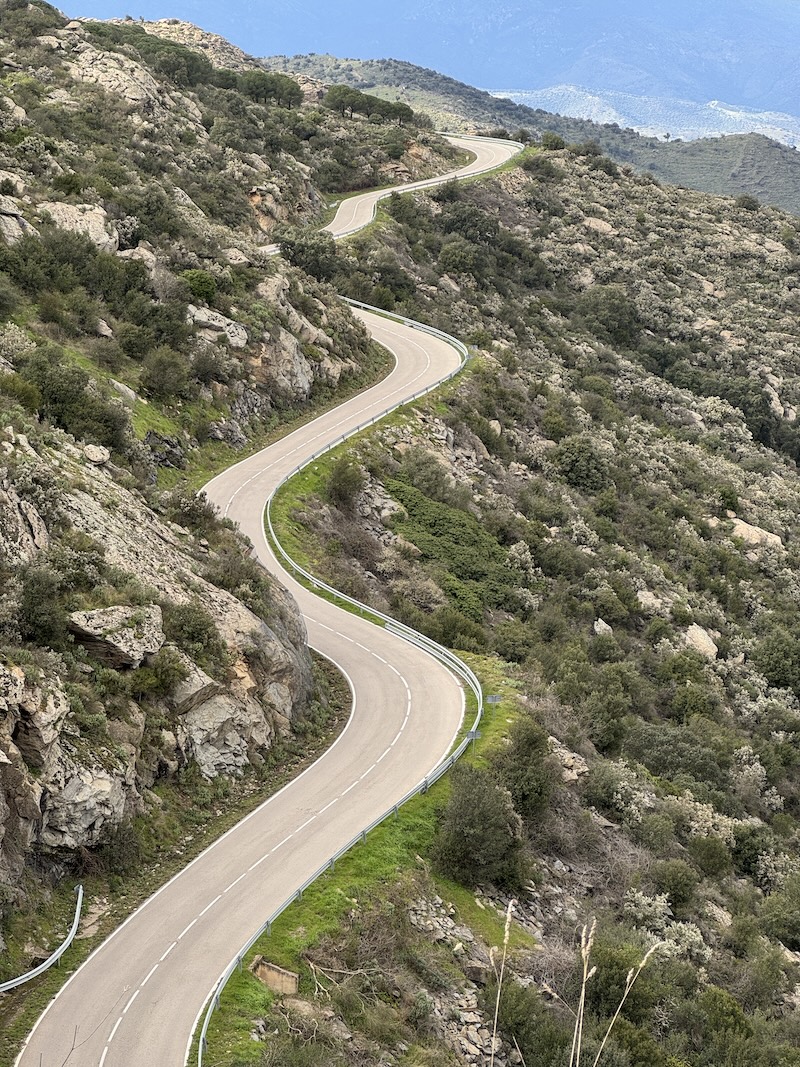Arriving to our Catalonian vacation house I can’t help but share a sense of disappointment. Not at the house, an impressive structure built into the side of a mountain, and certainly not at the expansive view, the entirety of the town of Cadaqués laid before us. The disappointment was directed at the two cars arriving to the house a few minutes later comprising the remainder our party: a Volvo XC40 and a BMW X1. Why travel all this way and not rent something European?
I’m immediately corrected. Yes, fair enough, Volvo and BMW are European manufacturers. To an American, though, there’s really nothing exotic or exciting about an upmarket compact SUV from either of these brands. Both would feel just at home sitting in traffic between a pickup truck and a minivan in Reno or Atlanta as they are here in Spain. To me, part of the appeal in flinging myself across the Atlantic stuffed into a window seat is to rent a car that I’d never find back home.
I hoped the Citroën C5 Aircross Hybrid would be exactly that. A car I’ve never seen before in a format I’m well acquainted with, the compact SUV. Seemingly perfectly suited for our needs over the next week and a half, featuring plenty of room for luggage, extra passengers, and a hybrid powertrain to mitigate fuel cost in a place where gas runs somewhere north of €1.60 per liter, nearly $7 per gallon.
 The car I’d never find back home.
The car I’d never find back home.
A typical US driver hasn’t had the chance to see much of Citroën since the mid-1970s when the company pulled out of the North American market. To a driver of my generation, it’s a brand associated with quirky antiques and avant-garde French engineering falling squarely in the realm of the collector. It might be easy for someone of my demographic to nearly forget about Citroën entirely until traveling abroad and realizing that not only do they still make ‘em, but they’re pretty damn popular, too.
I spend the first few days of the trip driving between Barcelona and our various Costa Brava destinations waiting for various French automotive eccentricities to reveal themselves. I clumsily fumble through the central touchscreen to connect my phone only to be stymied by a Bluetooth button that refuses to enable itself, so I continue fumbling to find a radio station. The screen is fine. It’s bright and the resolution is good enough, but the interface is under-designed, a frustrating and inconsistent experience. The push-button parking brake feels right out of my mom’s old Volkswagen Tiguan.
It dawns on me quickly that the car’s chatty. Dings and bells every few minutes as speed limits jump up and down along Spanish back roads. I can’t quite tell if the car’s using map data or a camera system to determine the speed limit, but on divided highways it’ll yell at me for going 40 km/h over the speed limit for an off-ramp I didn’t take.

The C5 blends in well with local traffic as we speed from Cadaqués toward Toulouse. On a highway full of local brands like Citroën, Renault, Peugeot, Dacia, BMW, and Mercedes-Benz and common global imports like Toyota or Suzuki, my eye is drawn to the rare American import. I imagine we can infer a lot of positive things about the person that ignores such a vibrant domestic automotive market to instead purchase a Ford Ranger, Chevrolet Camaro, Jeep Wrangler, or Chrysler 300, all vehicles we actually saw on the road. We can similarly infer many negative thing about the maniac that buys a Hummer, PT Cruiser, or Ram 1500 (again, we actually saw all of these). It’s fun to consider these owners as the European complement to an American enthusiast with his retro-futuristic 1970’s Citroën. Does a Spaniard get excited to travel across the Atlantic and rent an F-150? Would he think my Bronco is quirky and weird?
The C5 beeps repeatedly and snaps me back to reality. Somewhere in the distance, on a different road, the car has spotted a 70 km/h sign and tries desperately to warn me. We exit the highway at the ancient walled city of Carcassone for lunch, arriving around 2:20. We learn that France collectively decided that lunch may not be ordered after two.
In our country, where we’re not allowed to buy the C5, we fill the gap with the roughly equivalent in size, popularity, and function Subaru Crosstrek, maybe the Forester: a popular, compact, utilitarian car well suiter for modern life. Fuel efficient and easy to drive at speed on the highway, trading Subaru’s off-road posture for agility through the kind of narrow, old-world streets that make an American driver’s heart race. I’d wager Citroëns are much more reliable, popular, and profitable now than when we last saw them in the American market, but to drive one today isn’t unlike driving any other globalized compact SUV.
Let’s say I wake up tomorrow living a parallel life in rural France: do I buy myself a Citroën C5 Aircross Hybrid? No, probably not — at least not when there are so many incredible alternatives (Suzuki Jimny, perhaps?). Would I rent one again to dutifully drive me and my luggage from town to town, blend in with the locals, and save me money on gas as I do it? I think I would.